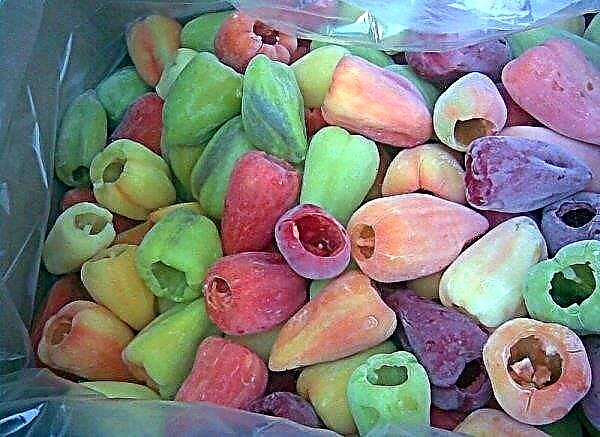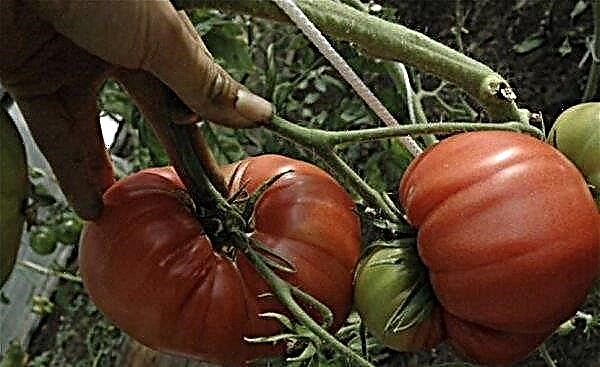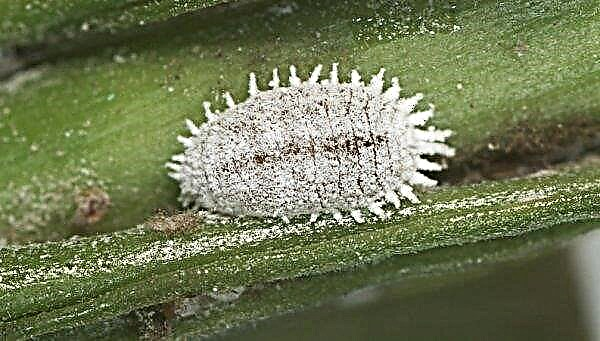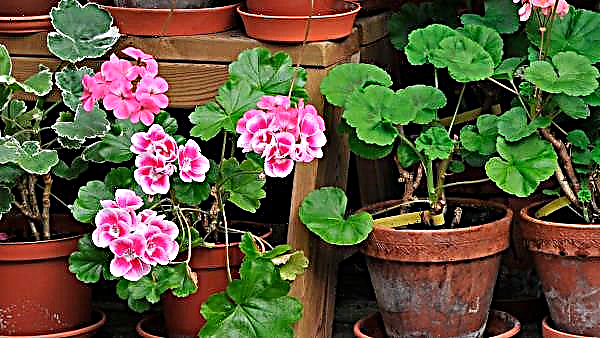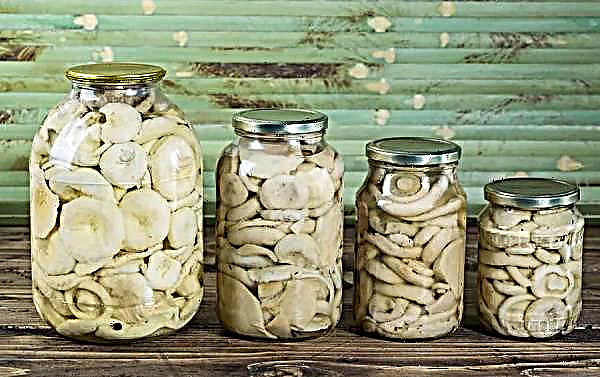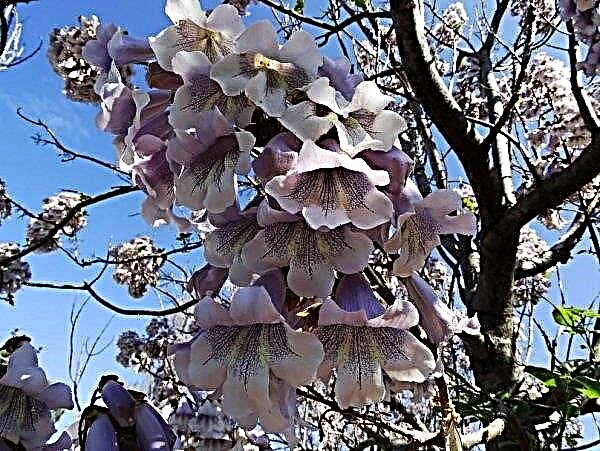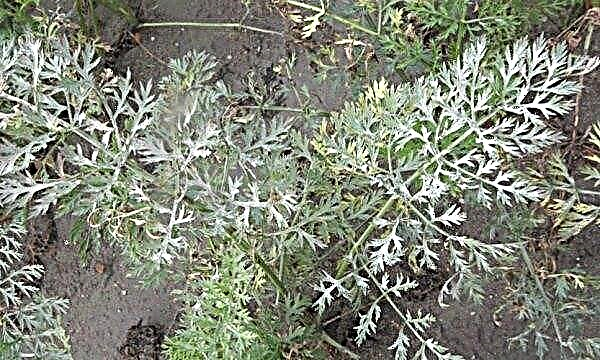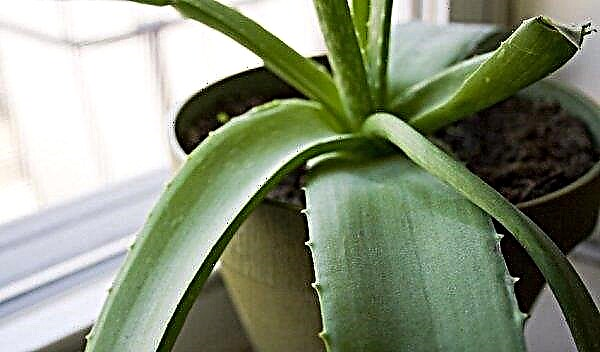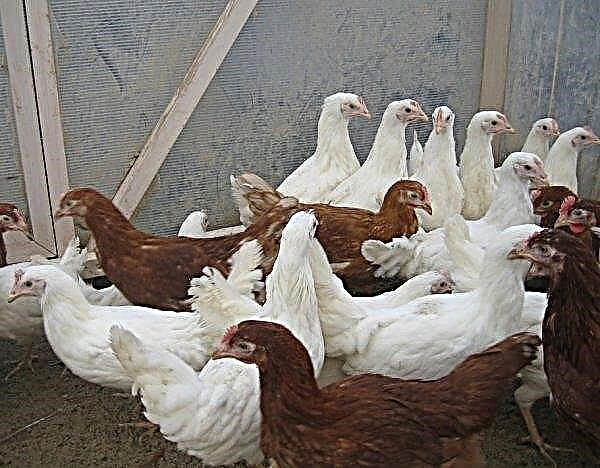Tulips are the most popular spring flowers in the gardens of our country. Their petals can have white, yellow, orange, red, pink or purple color, depending on the variety. This article is devoted to the late-flowering cultivar of Finol tulips, agricultural technology for growing and caring for them.
Grade description
All terrestrial parts of the tulip grow from an underground bulb that is at least one year old. Usually it has an ovoid or triangular shape, with a diameter of 2 to 5 cm, and consists of fleshy granular scales surrounded by a dry integument.
Description of tulip varieties Finola:
- the green stem is stiff and straight, smooth, has a length of 30 to 40 cm;
- the leaves are gray-green, have no petiole, rather large, elliptical or lanceolate;
- one plant usually grows from 3 to 5 leaves;
- the bud is shaped like a glass;
- multi-petal, terry flower;
- the color of the flower is pink, has a brighter strip in the center and overflows of a pale shade closer to the edge of the petals;
- late blooms in the second half of May.
Growing Features
The tulip fruit is a bag that can hold up to 100 seeds. In amateur cultivation, it is better not to allow fruiting, because this weakens the underground bulb, and tulips that reproduce generatively (by seeds) do not repeat the characteristics of the mother plant.
Landing rules
Tulips are planted in autumn at the turn of September and October. In warm weather, they can be planted even in November, the main thing is that the soil is not too cold and the snow does not lie. Such conditions will allow the bulb to take root successfully.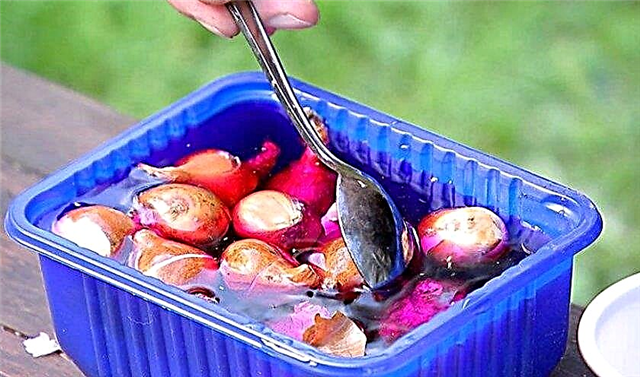 Pre-planting material is soaked in a preparation containing fungicide, mix the soil in the flower bed with fertilizers and plant flowers at 10 cm intervals to a depth of 10-15 cm (depending on their size).
Pre-planting material is soaked in a preparation containing fungicide, mix the soil in the flower bed with fertilizers and plant flowers at 10 cm intervals to a depth of 10-15 cm (depending on their size).
It is better to plant tulip bulbs in baskets so that they do not "drown" in the ground and are protected from rodents. Before the onset of the first frosts, the flower bed should be watered from time to time so that the soil is constantly moist.Did you know? The oldest varieties of tulips were brought to Europe from Turkey in the middle of the XVI century, and since then the plants have enjoyed unrelenting popularity.

The subtleties of care
Variety Finola has a rather short growing season (about 100 days), which begins in mid-March and ends in June. These plants grow well on sandy loam soils with a neutral or alkaline reaction (pH 6.5 to 7.5). The soil must be fertile, permeable, humus.
Tulips have a high need for water, especially during shoot growth and flowering. After this, the flowers should not be watered too abundantly, as this will adversely affect the ripening of planting material. They bloom most abundantly in places where there is a lot of sun during the day, so you should not plant them in the shade or partial shade.Did you know? In the Middle Ages, the cost of tulip bulbs was determined by their weight in gold. The monarchs of Europe sent them as a gift to members of friendly royal houses.

Finola does not grow well on scarce soils, so root fertilizers must be applied under the plants. In the spring, flowers are fed with nitrogen additives that will stimulate their growth, and in the fall - containing phosphorus and potassium.
In the spring, you need to regularly water, fertilize and chemically protect the plants. Chemical treatment of tulip bulbs before planting, as well as proper plant care, will allow the garden owner to enjoy beautiful and lush blooms next spring.
This variety prefers long and cool autumn, rich in rains, and snowy, short and mild winters. When the winter period is snowless and frosty, it is worth sheltering a site with perennial flowers with straw, spruce branches or peat. During the growing season, weeds should also be systematically destroyed and preventive spraying of the plants should be carried out, which will help prevent the attack of pests and the development of diseases.
Variety propagation
Variety Finola blooms only about ten days a year (usually at the beginning or end of May), but leaves and shoots die off only in June. It is at this time that you need to start digging the bulbs. If you leave them in the ground for the summer, this can lead to the development of diseases that are promoted by high temperature and excessive humidity.
Tulips easily propagate vegetatively. Several young shoots (5–10), of various diameters, which flower growers call “children”, grow on an adult bulb during the summer growing season. For the further propagation of the variety, it is better to take planting material with the largest diameter of the bulb, strong plants will subsequently grow from it.
This culture can also propagate generatively, i.e. by seed. However, seed ripening significantly weakens the development of bulbs and can lead to poor flowering in the next season.
Important! Thanks to vegetative propagation, the grower can be sure that the plants will repeat the parental characteristics (color of the petals, stem height, length of the flowering period).
The dug bulbs must be thoroughly dried, for this they are placed in a dry and ventilated room. It is undesirable to dry them in direct sunlight, since planting material can get thermal burns, where subsequently foci of rot will develop.
After about 2-3 weeks, you can start cleaning the bulb, during which the remaining soil and dried parts of the plant are removed. This should be done carefully so as not to damage the top layer of the bulbs. Then it is necessary to carefully separate the individual children from each other and remove those that are sick or gnawed by pests. Planting material should be destroyed in a fire (burned) so that pathogenic microorganisms do not spread to other plants, or thrown into a container for organic waste.
The cleaned and sorted material must be treated for diseases (soak in fungicide). Then it is dried again and stored in boxes with ventilation openings, in a dry and ventilated room at a temperature of +20 ... + 23 ° C. Prior to planting, it is advisable for the grower to periodically inspect the bulbs and remove those that look sick or affected by pests.
Pests and diseases
Like any other plant, the tulip is susceptible to disease and pest attack. It is easier for flower growers to carry out preventive actions and prevent the occurrence of diseases than to try to cure a diseased flower bed.
Fungal diseases:
- Botrytis tulipae (gray tulip mold) - One of the worst diseases in growing this crop. The main symptom is the appearance of many small gray spots on all parts of the plant, as well as distorted leaves, stems and buds. This disease spreads very quickly to other plants, so diseased bulbs should be disposed of as soon as possible. You can prevent the disease by spraying planting material with drugs from fungal diseases.
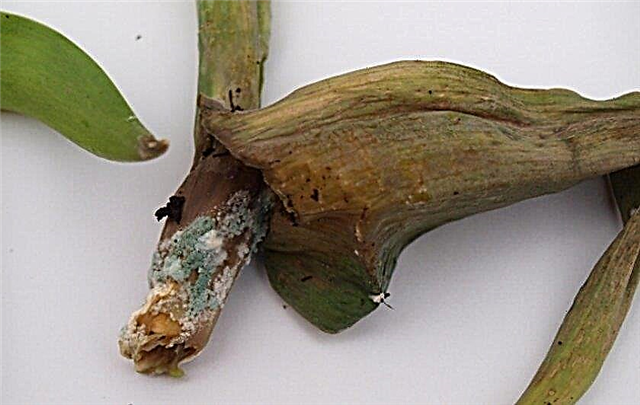
- Fusarium oxysporum f. Sp. Tulipae (tulip Fusarium) - A fungal disease, however, unlike the gray mold of a tulip, it only affects its bulbs. They become spotty, begin to rot, give off a disgusting smell and become soft. From such planting material weak and fragile plants grow that look inconspicuous. This disease develops when the bulbs are stored in moist rooms.

- Penicillium carymbiferum - P.cloplopium (penicillosis) - caused by fungi of the Penicillium family. Parts of the bulbs become dry and hard, then soft and spongy. This disease especially threatens planting material that has been damaged during digging or transplanting. Prevention means the selection of healthy children and their proper storage.
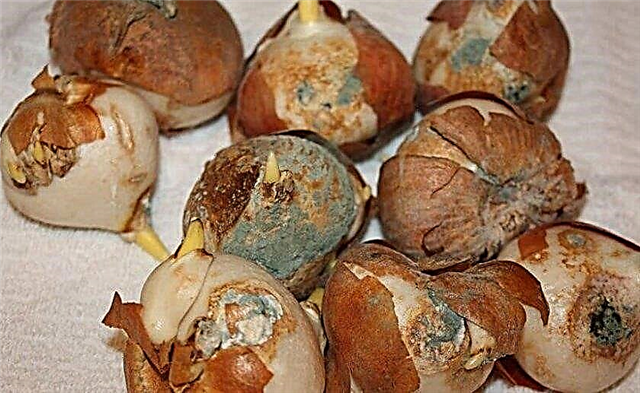
Other, less common fungal diseases:
- rhizoctonia solani (rhizoctonia);
- pythium ultimum (gangrene);
- sclerotium perniciosum (root rot rot);
- sclerotium tuliparum (hard rot).
Important! Florists should not forget that it is undesirable to process flower beds from pests and diseases on too hot and windy days, as well as shortly before the rain. Weather can help chemicals evaporate under the influence of the sun and wind, and can also be washed away by raindrops.
Finola has a wax coating on the leaves and shoots, which prevents the penetration of chemicals, therefore before carrying out a protective treatment against diseases and pests, a wetting agent must be added to the solution to reduce surface tension (for example, a few tablespoons of dishwashing liquid or laundry soap). Thanks to this, the drug will densely cover all parts of the plant.
Viral diseases:
- TBW - the virus, the most complex disease of this culture, manifests itself in the form of silver or faded spots and veins on the leaves, as well as in discolored areas on the flower petals. This disease can be transmitted by aphids.

- August disease (necrosis) - small dark spots appear on the leaves, which eventually grow in diameter and spread to other parts of the flower. The disease often causes general deformation of the plants.
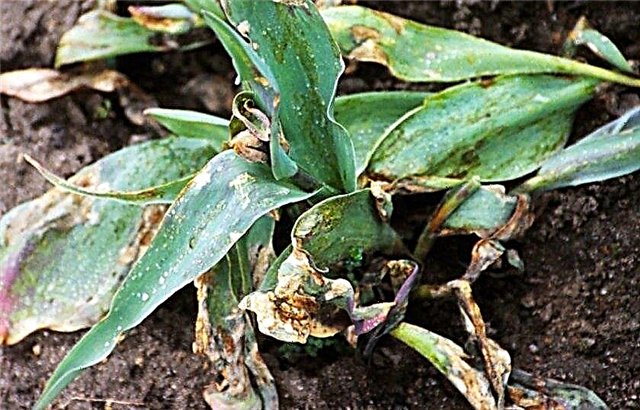
- Cucumis virus (mosaic) - the disease manifests itself in the appearance of variegated leaves and spots of various shades on the largest flowers.
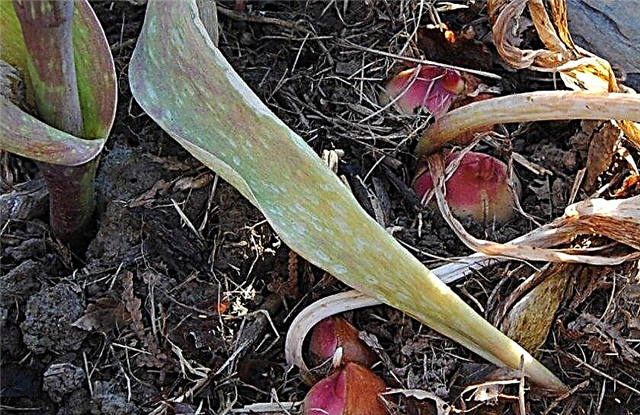
One of the most dangerous pests for tulips are mice that love to feast on the bulbs of this culture. Plants can also be damaged by a bear or nematode. Planting tulips in iron baskets will protect the bulbs from the teeth of rodents, and preplant soaking in solutions with an insecticide from harmful insects.
Tulip in landscaping
Planning tulip plantings can be a very interesting activity, but the designer must know what he wants to achieve in the end. This requires knowledge of different growing options, for example, tulip fields, planting around trees, among perennial plants and in containers. These options depend on the landscape and imagination of the gardener.

When choosing the right varieties, the designer pays attention to the flowering time, the height of the flowers and the color of the petals, and then either plant varieties that bloom at the same time, or those that will start flowering one after another. This culture can also be located in rock gardens or on the curbs. It is best to use bright colors where they are not in the garden, as well as complement bald spots in places where nothing else grows at this time.
If you choose the right place, color, type and density of planting bulbs, then the tulip garden will be decorated with beautiful flowering throughout the spring season.So that tulips reveal the beauty of spring blooming, landscape designers plant them:
- under trees or bushes;
- large similar or mixed groups consisting of several tens of plants;
- in combination with other perennial flowers, for example, decorative onions, hyacinths, daffodils;
- next to other perennial plants with decorative qualities;
- in portable containers, pots.

Finola tulips are very decorative thanks to lush, multi-leaf buds and large gray-green leaves. They can be successfully grown both in a small flower bed near the house, and in large areas of flower gardens.








